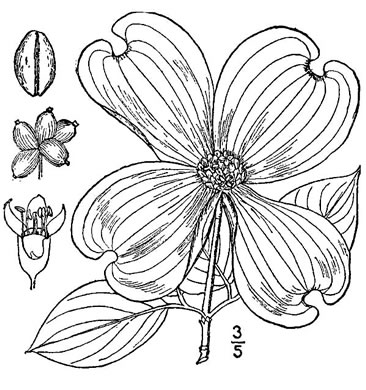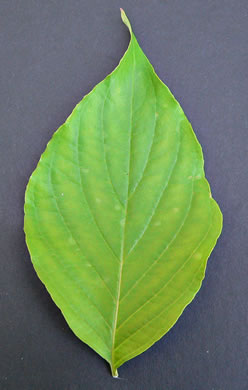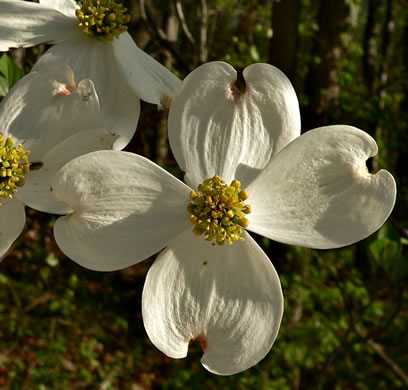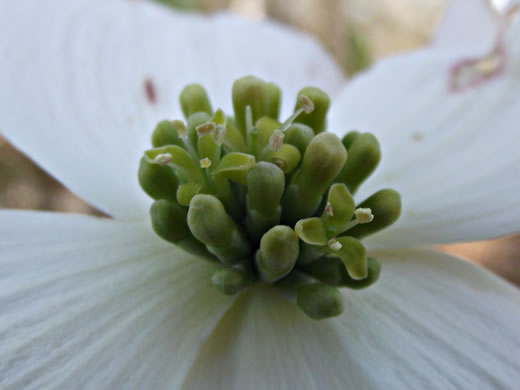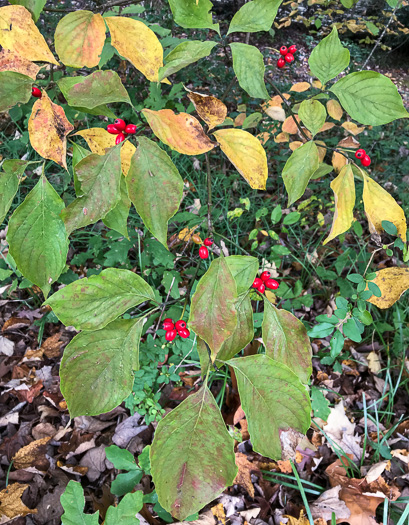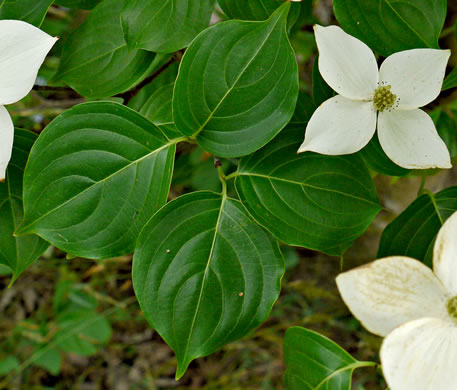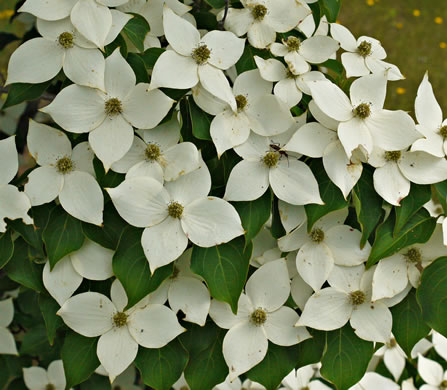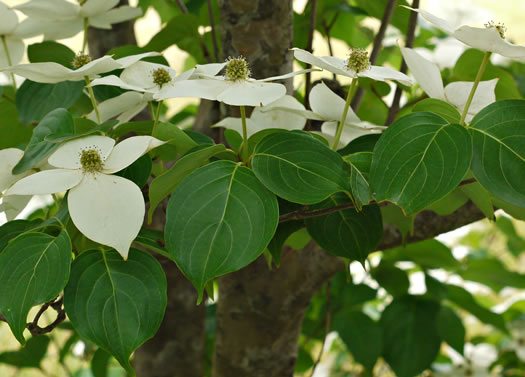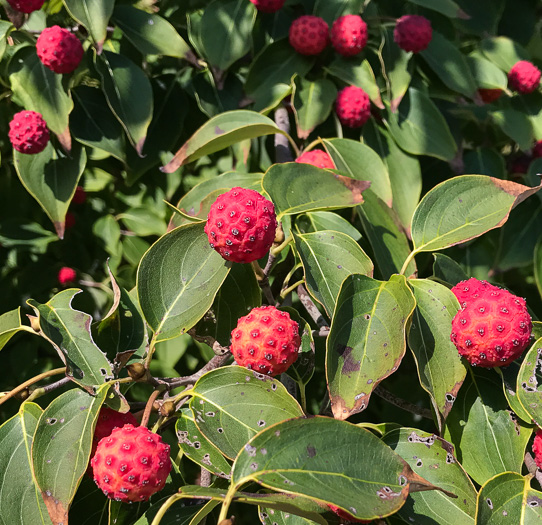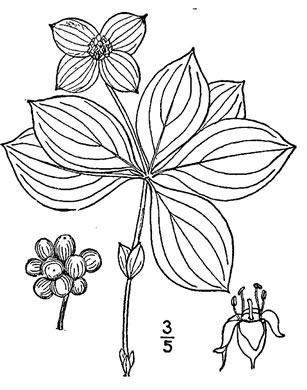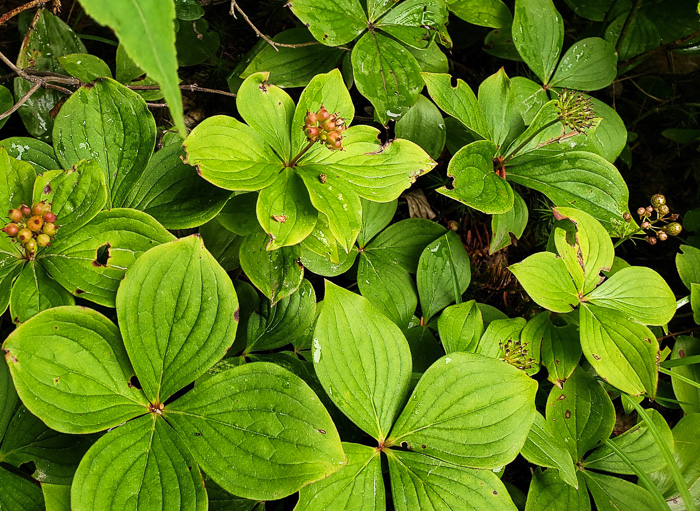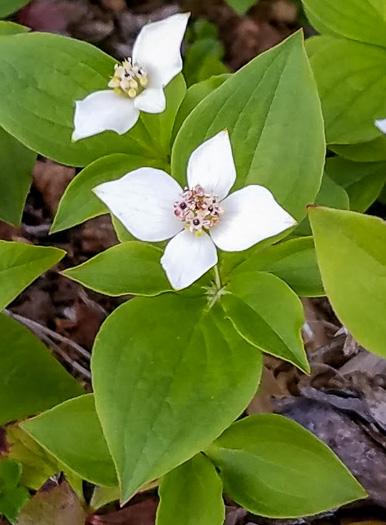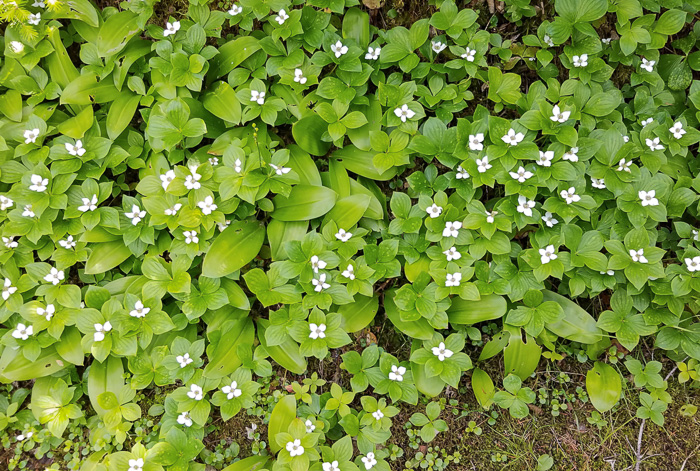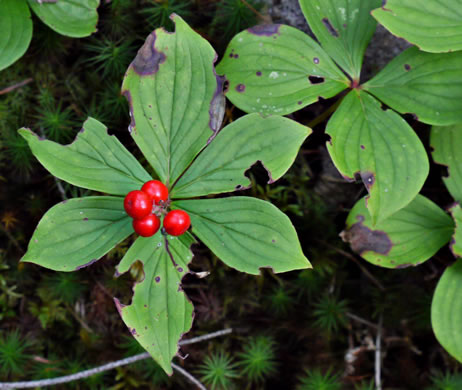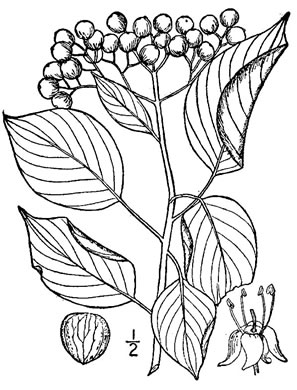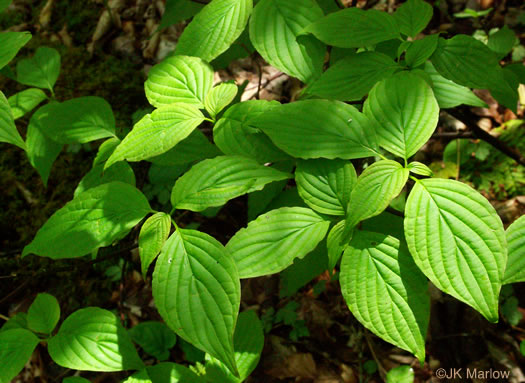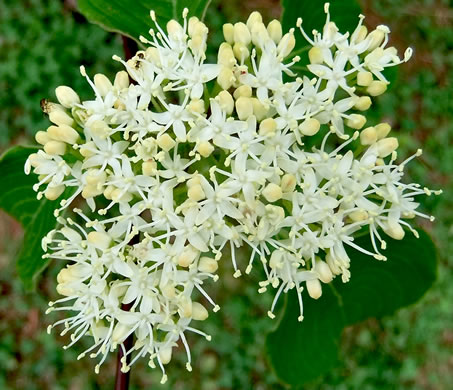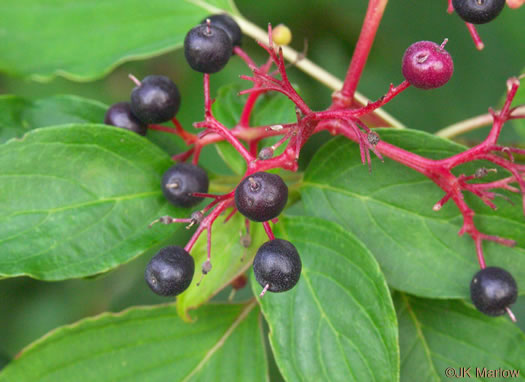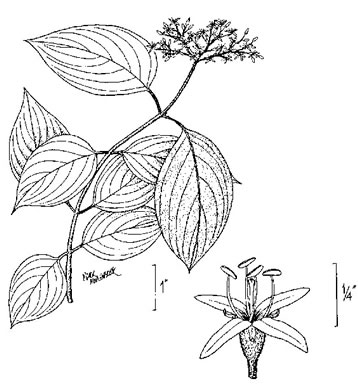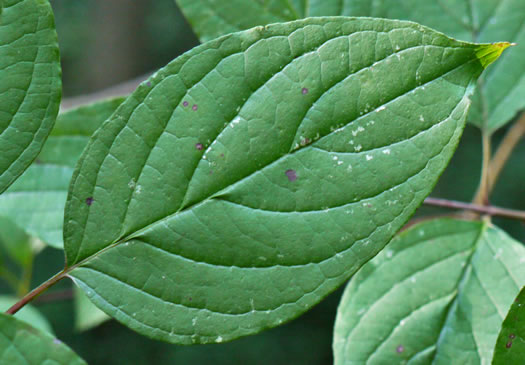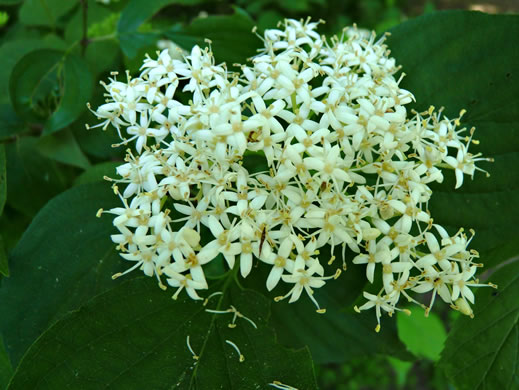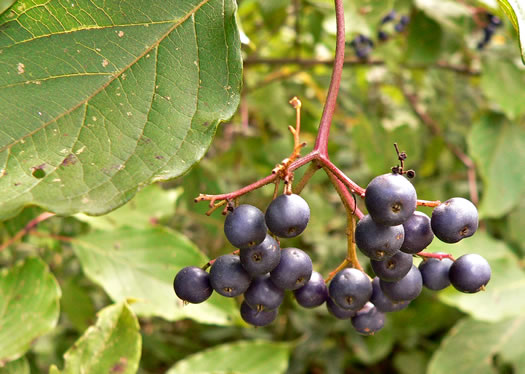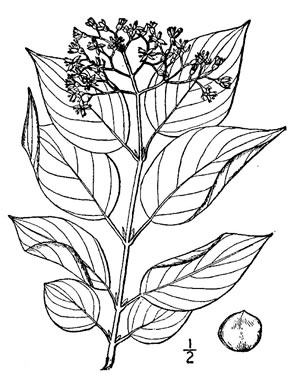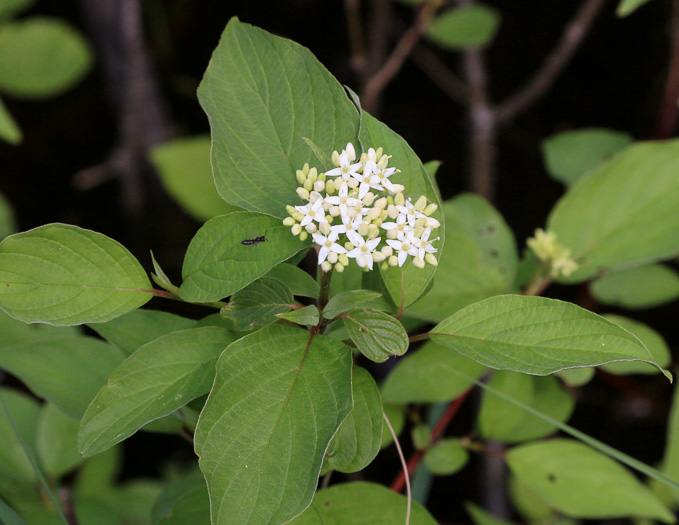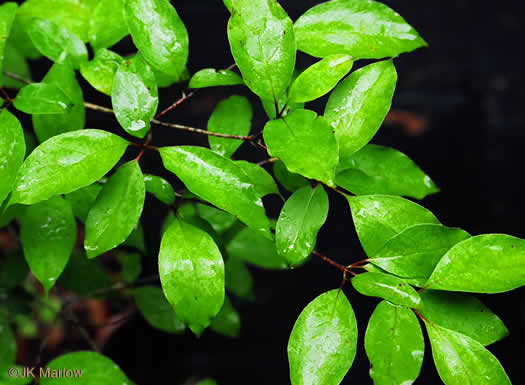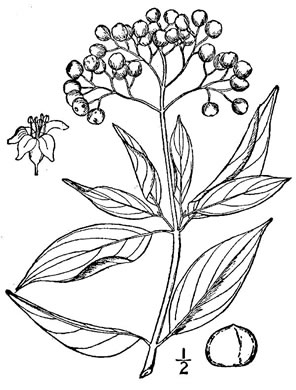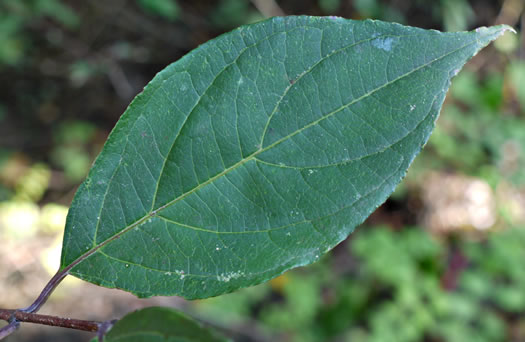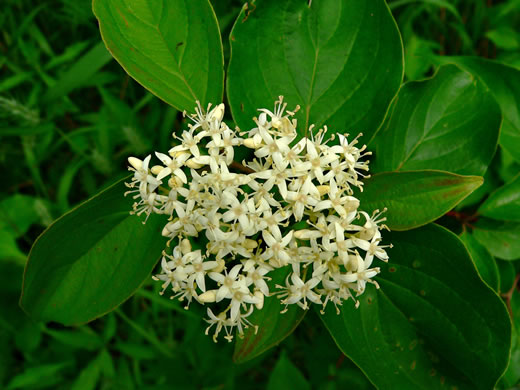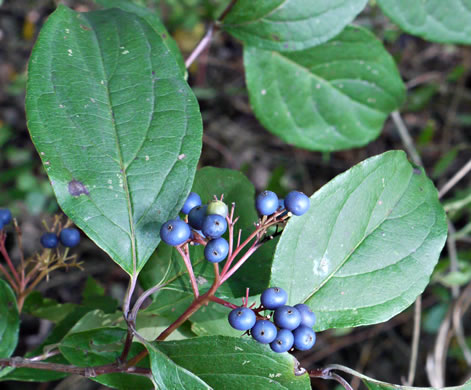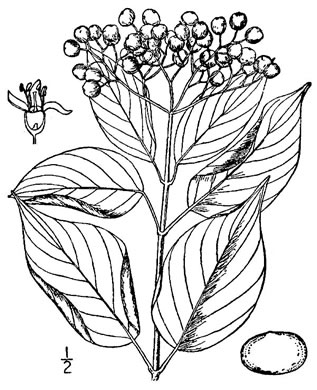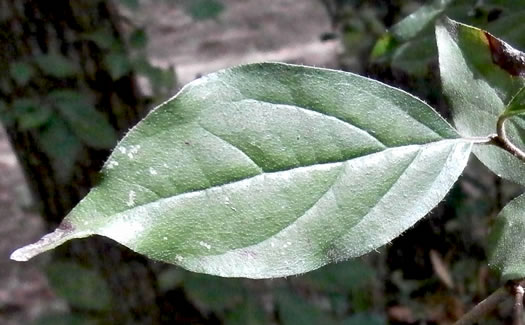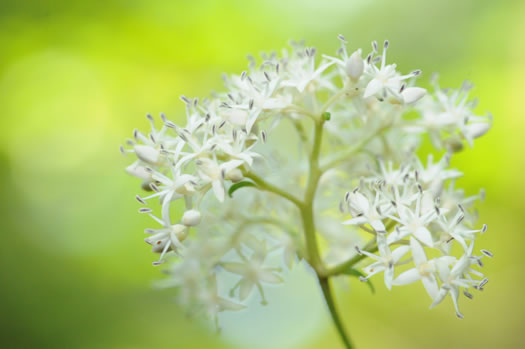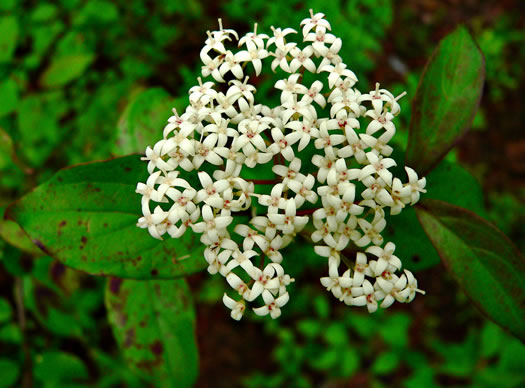Hovering over an image will enlarge it and point out features (works better on desktop than on mobile).
![]() A camera indicates there are pictures.
A camera indicates there are pictures.
![]() A speaker indicates that a botanical name is pronounced.
A speaker indicates that a botanical name is pronounced.
![]() A plus sign after a Latin name indicates that the species is further divided into varieties or subspecies.
A plus sign after a Latin name indicates that the species is further divided into varieties or subspecies.
Most habitat and range descriptions were obtained from Weakley's Flora.
Your search found 10 taxa in the family Cornaceae, Dogwood family, as understood by Weakley's Flora.

![]()
![]() Common Name:
Flowering Dogwood
Common Name:
Flowering Dogwood
Weakley's Flora: (4/14/23) Benthamidia florida FAMILY: Cornaceae
SYNONYMOUS WITH PLANTS National Database: Cornus florida FAMILY: Cornaceae
SYNONYMOUS WITH Vascular Flora of the Carolinas (Radford, Ahles, & Bell, 1968): Cornus florida 142-01-001 FAMILY: Cornaceae
Habitat: In a wide variety of dry to moist forests and woodlands, especially over acidic substrates
Common
Native to the Carolinas & Georgia

![]() Common Name:
Kousa Dogwood
Common Name:
Kousa Dogwood
Weakley's Flora: (4/14/23) Benthamidia japonica FAMILY: Cornaceae
SYNONYMOUS WITH PLANTS National Database: Cornus kousa FAMILY: Cornaceae
Habitat: Suburban areas, sometimes planted as an ornamental and may persist or seed down in the immediate vicinity of the parent tree
Waif(s)
Non-native: China, Japan & Korea

![]() Common Name:
Bunchberry, Dwarf Dogwood, Dwarf Cornel
Common Name:
Bunchberry, Dwarf Dogwood, Dwarf Cornel
Weakley's Flora: (4/14/23) Chamaepericlymenum canadense FAMILY: Cornaceae
SYNONYMOUS WITH PLANTS National Database: Cornus canadensis FAMILY: Cornaceae
Habitat: High elevation forests, in humus or on talus, under Betula cordifolia, Picea rubens, or Pinus rigida
Native: north of the Carolinas

![]()
![]() Common Name:
Alternate-leaf Dogwood, Pagoda Dogwood, Pagoda Cornel
Common Name:
Alternate-leaf Dogwood, Pagoda Dogwood, Pagoda Cornel
Weakley's Flora: (4/14/23) Swida alternifolia FAMILY: Cornaceae
SYNONYMOUS WITH PLANTS National Database: Cornus alternifolia FAMILY: Cornaceae
SYNONYMOUS WITH Vascular Flora of the Carolinas (Radford, Ahles, & Bell, 1968): Cornus alternifolia 142-01-002 FAMILY: Cornaceae
Habitat: Mesic to dry-mesic forests
Common in Mountains, rare elsewhere
Native to the Carolinas & Georgia

![]()
![]() Common Name:
Silky Dogwood, Bush Dogwood, Silky Cornel
Common Name:
Silky Dogwood, Bush Dogwood, Silky Cornel
Weakley's Flora: (4/14/23) Swida amomum FAMILY: Cornaceae
SYNONYMOUS WITH PLANTS National Database: Cornus amomum FAMILY: Cornaceae
SYNONYMOUS WITH Vascular Flora of the Carolinas (Radford, Ahles, & Bell, 1968): Cornus amomum 142-01-003 FAMILY: Cornaceae
Habitat: Shores, streams, bottomlands
Common (uncommon in Coastal Plain)
Native to the Carolinas & Georgia

![]()
![]() Common Name:
Red Osier Dogwood, Bailey's Dogwood
Common Name:
Red Osier Dogwood, Bailey's Dogwood
Weakley's Flora: (4/14/23) Swida sericea FAMILY: Cornaceae
INCLUDING PLANTS National Database: Cornus sericea ssp. sericea FAMILY: Cornaceae
Habitat: Shrub swamps, bottomlands, suburban areas
Native: north & west of the Carolinas & Georgia

![]()
![]() Common Name:
Northern Swamp Dogwood, Gray Dogwood
Common Name:
Northern Swamp Dogwood, Gray Dogwood
Weakley's Flora: (4/14/23) Swida racemosa FAMILY: Cornaceae
SYNONYMOUS WITH PLANTS National Database: Cornus racemosa FAMILY: Cornaceae
SYNONYMOUS WITH Vascular Flora of the Carolinas (Radford, Ahles, & Bell, 1968): Cornus racemosa 142-01-004 FAMILY: Cornaceae
Habitat: Wet to moist forests and thickets
Rare in NC
Native to North Carolina

![]()
![]() Common Name:
Southern Swamp Dogwood
Common Name:
Southern Swamp Dogwood
Weakley's Flora: (4/14/23) Swida foemina FAMILY: Cornaceae
SYNONYMOUS WITH PLANTS National Database: Cornus foemina FAMILY: Cornaceae
SYNONYMOUS WITH Vascular Flora of the Carolinas (Radford, Ahles, & Bell, 1968): Cornus stricta 142-01-005 FAMILY: Cornaceae
Habitat: Swamps, streambanks, marshes, alluvial forests
Common (rare in Mountains)
Native to the Carolinas & Georgia

![]()
![]() Common Name:
Eastern Roughleaf Dogwood
Common Name:
Eastern Roughleaf Dogwood
Weakley's Flora: (4/14/23) Swida asperifolia FAMILY: Cornaceae
SYNONYMOUS WITH PLANTS National Database: Cornus asperifolia FAMILY: Cornaceae
SYNONYMOUS WITH Vascular Flora of the Carolinas (Radford, Ahles, & Bell, 1968): Cornus asperifolia 142-01-006 FAMILY: Cornaceae
Habitat: Mesic calcareous forests and thickets, shell middens, calcareous hammocks
Uncommon (rare in NC)
Native to the Carolinas & Georgia

![]() Common Name:
Midwestern Roughleaf Dogwood
Common Name:
Midwestern Roughleaf Dogwood
Weakley's Flora: (4/14/23) Swida drummondii FAMILY: Cornaceae
SYNONYMOUS WITH PLANTS National Database: Cornus drummondii FAMILY: Cornaceae
Habitat: Open woodlands and glades over calcareous rocks (limestone, calcareous shale); also naturalized in wetlands and slopes along old railroad tracks (in VA)
Rare
Native to Georgia
Your search found 10 taxa. You are on page PAGE 1 out of 1 pages.

